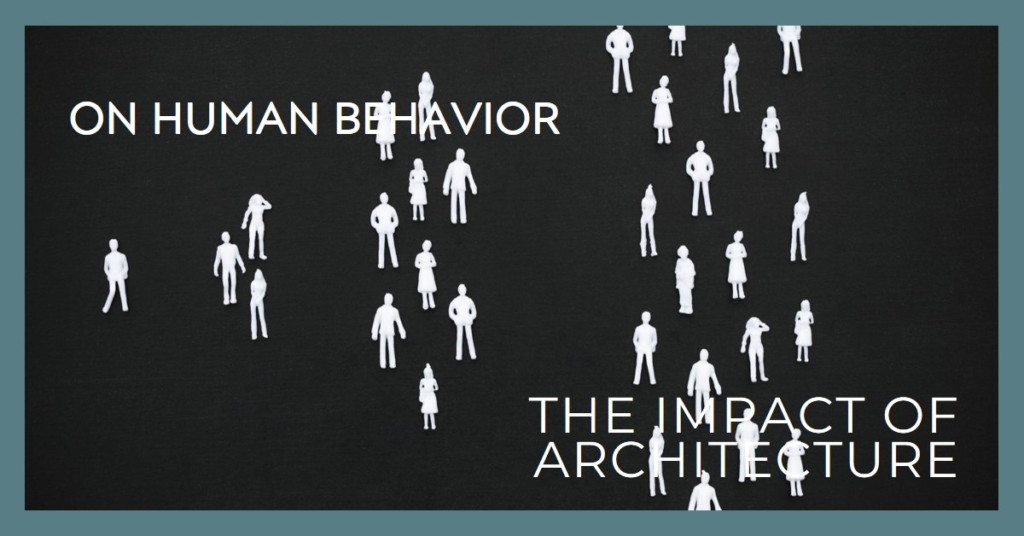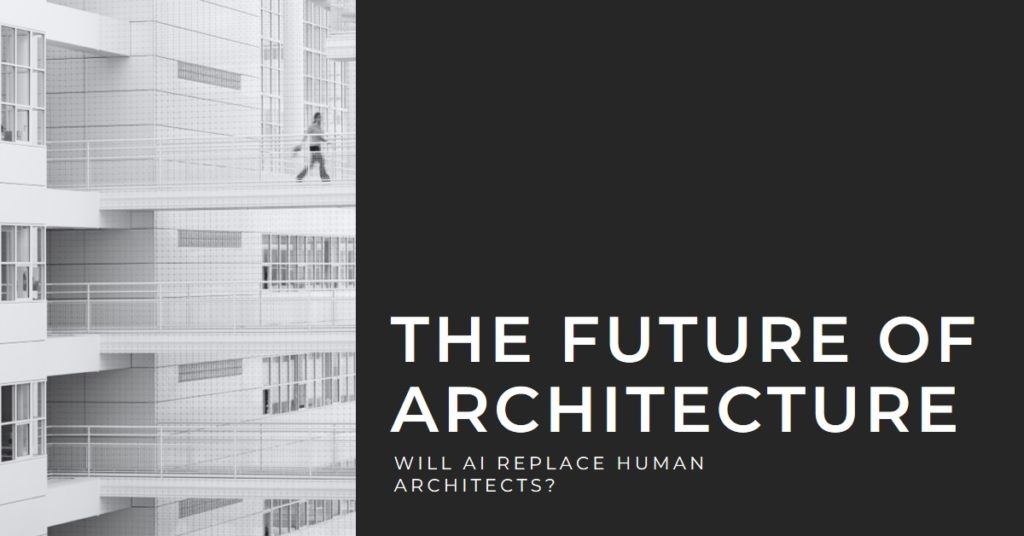
Table of Contents
Introduction
Architecture, the silent narrator of human existence, shapes the way we live, work, and interact with our surroundings. From towering skyscrapers to humble cottages, each structure exerts a profound influence on our behavior, often in ways we may not consciously perceive. In this exploration, we delve into the intricate relationship between architecture and human behavior, uncovering how design decisions resonate far beyond mere aesthetics, profoundly shaping our lives.
Setting the Stage: The Influence of Environment on Behavior
The built environment serves as the canvas upon which the drama of human life unfolds. Every architectural choice, from the layout of streets to the design of interiors, subtly guides our actions and emotions. Consider, for instance, the effect of open, airy spaces versus cramped, dimly lit ones. Research suggests that environments flooded with natural light and ample space tend to foster creativity, productivity, and positive social interactions. Conversely, confined spaces with poor lighting can evoke feelings of claustrophobia and anxiety, inhibiting our ability to perform tasks effectively.
Moreover, the arrangement of buildings within a community can either encourage or discourage social cohesion. Neighborhoods characterized by interconnected streets, parks, and communal spaces often promote a sense of belonging and encourage residents to engage with one another. Conversely, sprawling developments dominated by isolated structures and car-centric design may foster feelings of alienation and detachment. By understanding these dynamics, architects wield the power to shape not only physical spaces but also the social fabric of communities.
Form Follows Function: The Psychology of Architectural Design
In the realm of architecture, form does not merely follow function—it influences behavior. Consider the psychological impact of building design on occupants. Buildings designed with clear circulation paths and intuitive layouts can reduce stress and confusion, enhancing our ability to navigate and interact with our environment. Conversely, convoluted layouts and confusing signage can lead to frustration and disorientation, hindering productivity and well-being.
Furthermore, the aesthetic qualities of architecture can evoke powerful emotional responses. Whether through the use of color, texture, or proportion, architects possess the ability to evoke feelings of awe, tranquility, or excitement. For example, research suggests that exposure to nature-inspired elements, such as wood finishes or views of greenery, can promote psychological restoration and stress reduction. By harnessing the principles of environmental psychology, architects can design spaces that nourish the mind, body, and soul.
The Power of Symbols: Architecture as Cultural Signifier
Architecture serves as a mirror reflecting the values, beliefs, and aspirations of society. Through its symbols and motifs, architecture communicates identity, heritage, and cultural significance. Consider, for instance, the enduring legacy of iconic landmarks such as the Eiffel Tower or the Taj Mahal. These structures not only serve practical functions but also embody the collective spirit of their respective cultures, serving as potent symbols of national pride and identity.
Moreover, architectural symbolism extends beyond individual monuments to encompass entire cityscapes. The juxtaposition of historical and modern structures within urban environments tells a story of evolution and continuity, honoring the past while embracing the future. By preserving historic landmarks and integrating contemporary design, cities can cultivate a sense of rootedness and belonging, fostering a deeper connection between inhabitants and their built environment.
Designing for Wellness: The Role of Architecture in Health and Well-Being
In an age marked by rising rates of stress-related illnesses and mental health disorders, the importance of designing spaces that promote well-being cannot be overstated. Architects are increasingly embracing biophilic design principles, which seek to reconnect occupants with the natural world through the integration of natural elements and patterns. Studies have shown that exposure to nature-inspired environments can reduce stress, lower blood pressure, and improve cognitive function.
Furthermore, the design of healthcare facilities plays a crucial role in patient outcomes and experiences. Hospitals designed with ample natural light, soothing colors, and access to green spaces can promote healing and recovery, while also reducing the incidence of medical errors and complications. Similarly, the design of educational environments can impact student performance and behavior, with factors such as classroom layout, acoustics, and lighting influencing concentration, engagement, and academic achievement.


Sustainability by Design: Building a Greener Future
In an era of climate change and environmental degradation, architects bear a profound responsibility to minimize the ecological footprint of the built environment. Sustainable design principles prioritize energy efficiency, resource conservation, and environmental stewardship, seeking to harmonize human needs with the natural world. From passive solar design and green roofs to recycled materials and water-saving technologies, architects have a myriad of tools at their disposal to create buildings that tread lightly on the planet.
Moreover, sustainable architecture goes beyond mere environmental considerations to encompass social and economic sustainability. By designing buildings that promote walkability, access to public transportation, and equitable access to resources, architects can contribute to more resilient, inclusive communities. By embracing the principles of sustainability, architects can not only mitigate the impacts of climate change but also create spaces that enhance quality of life for present and future generations.
The Psychology of Space: How Architecture Shapes Social Interaction
Architecture plays a pivotal role in shaping our social interactions and relationships. The design of spaces can either facilitate or inhibit communication, collaboration, and community-building. Consider, for instance, the layout of a café or a co-working space. By arranging seating areas in close proximity and creating opportunities for serendipitous encounters, architects can foster spontaneous interactions and networking opportunities.
Furthermore, the design of public spaces—such as parks, plazas, and marketplaces—plays a vital role in fostering social cohesion and civic engagement. By creating inclusive, welcoming environments that cater to diverse needs and preferences, architects can promote a sense of belonging and collective ownership. Moreover, the design of residential neighborhoods can influence the frequency and quality of social interactions among neighbors, with factors such as pedestrian-friendly streets, front porches, and shared amenities facilitating social connections.
Beyond Borders: Architecture as a Catalyst for Global Dialogue
In an increasingly interconnected world, architecture serves as a universal language that transcends cultural, linguistic, and geographical boundaries. Architectural marvels such as the Sydney Opera House or the Burj Khalifa serve as symbols of human ingenuity and aspiration, inspiring awe and admiration across continents. Moreover, architectural exchange programs and collaborations enable architects to learn from diverse cultural perspectives, enriching their practice and fostering cross-cultural understanding.
Furthermore, architecture has the power to catalyze social change and address pressing global challenges. From affordable housing initiatives to disaster relief efforts, architects are leveraging their skills and expertise to create positive impact in communities around the world. By embracing principles of inclusivity, equity, and sustainability, architects can contribute to a more just, resilient, and harmonious world.
Conclusion: Shaping Our World, One Building at a Time
In conclusion, architecture is far more than just bricks and mortar—it is a potent force that shapes our thoughts, feelings, and behaviors. From the layout of our cities to the design of our homes, every architectural decision exerts a profound influence on the way we experience the world. By harnessing the power of design to promote wellness, sustainability, and social cohesion, architects have the opportunity to create spaces that enrich lives and inspire generations to come. As we navigate the complexities of the modern world, let us embrace the transformative potential of architecture to build a brighter, more compassionate future for all.


